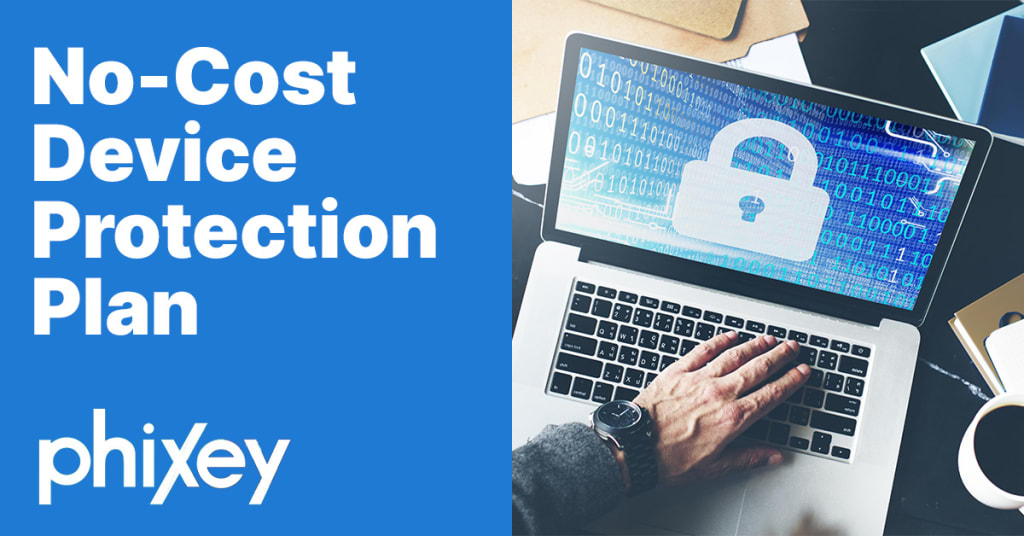No-Cost Device Protection Plans: What You Need to Know
No-cost device protection plans can offer a basic level of coverage for your device, but it's important to understand their limitations and compare them to paid plans before deciding. By carefully considering your device protection needs, budget, and risk factors, you can choose the plan that best suits your situation.

Introduction:
A device protection plan is an essential aspect of securing your smartphone, tablet, or other electronic devices against theft, accidental damage, and technical issues. While many protections plan come with a monthly or yearly fee, some providers offer no-cost plans with limited coverage. In this blog post, we will explore the ins and outs of no-cost device protection plans and how they compare to paid plans, so you can make an informed decision on which option is best for you.
Understanding No-Cost Device Protection Plans
No-cost device protection plans are typically offered by manufacturers or retailers as part of a promotional offer or as an added benefit when you purchase a new device. These plans may cover a limited range of issues, such as manufacturer defects or hardware malfunctions, for a specified period, usually the warranty period of the device.
It's essential to read the terms and conditions of a no-cost device protection plan carefully, as there may be exclusions and limitations on coverage. For example, a no-cost plan might not cover accidental damage or theft, which are more common issues faced by device users.
Comparing No-Cost and Paid Device Protection Plans
While no-cost device protection plans can provide some level of coverage, they often fall short compared to paid plans in terms of the range of issues covered and the duration of the protection. Here are some key differences to consider when comparing no-cost and paid device protection plans:
Coverage: Paid device protection plans generally offer more comprehensive coverage, including accidental damage, theft, and loss, while no-cost plans might only cover manufacturer defects or hardware malfunctions.
Deductibles and Service Fees: No-cost plans may have higher deductibles or service fees for repairs or replacements, making the overall cost of using the plan higher in the long run.
Duration of Coverage: Paid plans often provide coverage for the entire duration of your device's lifespan or as long as you continue to pay the monthly or yearly fee. No-cost plans, on the other hand, typically have a limited coverage period, often coinciding with the device's warranty.
Customer Support: Paid plans may come with better customer support, faster response times, and more convenient repair or replacement options, while no-cost plans might have more limited support resources.
Evaluating Your Device Protection Needs
Before deciding on a no-cost device protection plan, consider your device usage habits, the likelihood of encountering issues such as theft or accidental damage, and your budget for device protection. Ask yourself the following questions:
How prone am I to dropping or damaging my device?
How likely is it that my device could be stolen or lost?
How much am I willing to pay out-of-pocket for repairs or replacements if my device is not covered by a protection plan?
If you have a high risk of encountering issues not covered by a no-cost plan, or if you require more comprehensive coverage, it might be worthwhile to invest in a paid device protection plan.
Connect with Phixey to get the best tablet protection plan.
Making the Most of a No-Cost Device Protection Plan
If you decide to opt for a no-cost device protection plan, take the following steps to ensure you maximize the benefits:
Register your device with the provider as soon as possible, as some plans require registration within a certain time frame from the date of purchase.
Read the terms and conditions carefully to understand the extent of coverage, any limitations or exclusions, and the process for filing a claim.
Keep proof of purchase and any relevant documentation, as you may need to provide these when filing a claim.
Be proactive in maintaining your device and addressing any issues promptly, as delays or negligence could void your protection plan.
Conclusion:
No-cost device protection plans can offer a basic level of coverage for your device, but it's important to understand their limitations and compare them to paid plans before deciding. By carefully considering your device protection needs, budget, and risk factors, you can choose the plan that best suits your situation.
If you opt for a computer protection plan, remember to register your device, familiarize yourself with the terms and conditions, and maintain your device responsibly to ensure you can take full advantage of the benefits offered by the plan. By staying informed and proactive, you can protect your valuable electronic devices and enjoy peace of mind. To get the best device protection plan get in touch with Phixey.





Comments
There are no comments for this story
Be the first to respond and start the conversation.